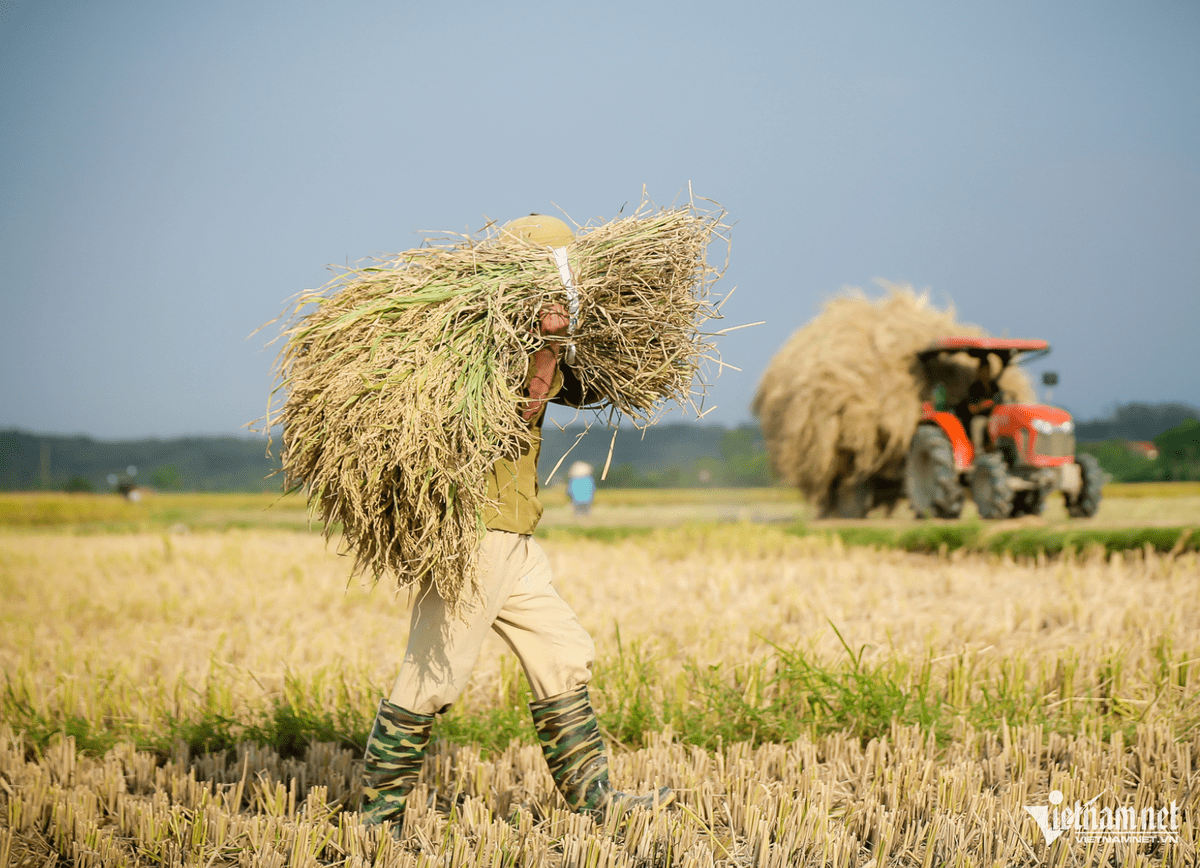
Forest carbon sequestration and storage services will be one of Vietnam's advantages in the time to come, said Le Hoang The, director of VOS Harvest, adding that carbon should be viewed as a long-term, sustainable source of income.
Starting from the synthesis of carbon by green plants, carbon exists in many forms before being released into the air. “Carbon doesn’t disappear, but just changes form,” The said.
Vo Xuan Vinh, head of the Business Research Institute, said Vietnam’s agriculture sector, which has great advantages in domestic and foreign carbon credit markets, is pioneering carbon credit sales in the country.
In 2023, Vietnam for the first time sold 10.3 million forest carbon credits via the World Bank for $5 per ton, earning $51.5 million (VND1.25 trillion).
Vinh said he hopes that Vietnam will join the global carbon credit market and export 5 million carbon credits more in the 2024-2025 period, raising the total number of carbon credits sold to 25 million.
Tran Minh Hai, vice principal of the School of Public Policy and Agricultural Development in Mekong Delta, said the Department of Crop Production under the Ministry of Agriculture and Rural Development (MARD) is working with the Institute of Agricultural Environment on a plan to complete a system of measurement, reporting and verification (MRV) for selling rice carbon credits.
MARD is also joining forces with TCAF (Transformative Carbon Asset Facility) to assess carbon credits at $20 per credit. If farmers comply with procedure, they will be able to reduce 30 percent of emission volume, which means a reduction of 2 carbon credits at an economic value of VND960,000.
However, he said the biggest economic benefit is not just the sale of carbon credits, but input cost reductions thanks to more effective production. Low-emission rice branding and re-organization of production on a large scale will also bring significant surplus value.
However, he warned that if "we cannot collect carbon credits, we will take a loss, not make a profit”.
Vietnam should not join the carbon credit in the field of rice farming at any cost, he said. Instead, the production process should be followed properly and sustainably, ensuring long-term benefits for both farmers and the agricultural economy.
The workforce needs to know how to manage new production processes, and apply technology to optimize absorption and carbon reduction in agriculture.
In "green" rice farming, farmers need to maintain documents, keep production diaries, and track carbon footprints. In addition, they must know how to collect waste and plant protection chemical residue, measure water levels, and monitor warehouse and rice dryers.
Tran Dai Nghia, head of the Department of Finance, Economics and Natural Resources and the Environment, said that in order to sell carbon credits under a voluntary basis, every country must create a surplus of carbon which exceeds the NDC (nationally determined contributions), or the country's commitments.
However, the important factor is carbon assessment. There are three international assessment systems but only two can be used in Vietnam: the quota exchange system and carbon credits.
Vietnam takes part mostly in the voluntary carbon market. This is the easiest model, but there is a time limit for assessment. If the time limit is exceeded, the system will force the carbon credit level to zero. Vietnam has not yet joined the compulsory market.
It is expected that Vietnam will pilot a carbon credit trading floor by 2025. if enterprises want to join the carbon credit market, they need to prepare human resources who know how to take stock, make declarations, and undertake tasks related to carbon.
Vinh said that in order to go green, humans must be put at the center. To join the carbon market, there must be reasonable strategies and the participation of many parties.
Tam An